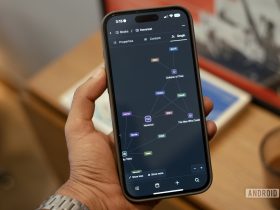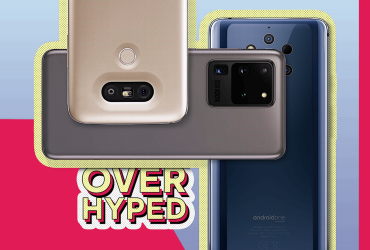This Little-Known Android Productivity App Has Changed How I Organize Everything

Contents
In a crowded world of productivity apps, finding a gem that transforms your workflow is a rare and exciting experience. For years, I have been searching for an all-in-one personal knowledge management (PKM) solution on Android that could help me connect my ideas, organize my thoughts, and transform scattered information into actionable knowledge. Here’s where I came across Capacities, and it completely changed the game.
It started as a casual exploration, but quickly turned into the realization that this app isn’t just another note-taker. It’s a dynamic environment that shifts how I think about, organize, and leverage my knowledge.

Related
Capacities is a true cross-platform solution
One crucial aspect of any personal knowledge management system is its accessibility. After all, my workflow revolves around a Google Pixel 8, an iPhone 15 Pro, a MacBook Pro, and a Windows desktop. This is where many PKM apps falter, often offering web wrappers (looking at you, Notion and Evernote).
However, Capacities is different. It offers native apps on all the major platforms. Even the mobile apps are neatly designed. The app feels fast, responsive, and has an intuitive UX. It’s a joy to use on small screens. Capacities isn’t just a watered-down desktop version.
Object-based organization is unique
Here is where Capacities blew my mind. It doesn’t just offer a basic editor with a toolbar and call it a day. For years, I was stuck in the folder and tag approach. While it was useful at one point, the organizational system had several limitations.
According to Capacities, not every note is the same, and not everything is just text. It treats every piece of information as an object. I can create objects for people, projects, books, meetings, ideas, recipes, articles, and so on. The idea is to assign specific categories to each object for unique notes.
For example, for a Book object, I can have properties for Author, Rating, Due Date, Reading Status, Comments, and more. Because everything is an object, linking them becomes intuitive. When I’m working on a Project’s object, I can easily link to the Person object of a team member, the Meeting objects where decisions were made, and the Article object that provided research.
I can also check the relations between such notes from a dedicated graph view. It helps me organize and navigate complex subjects with ease.
Daily notes is ideal for a digital journal
While there is no shortage of journal apps on Android, I prefer daily notes in Capacities to get the job done. The daily notes object integrates seamlessly with the calendar view, allowing you to switch between notes. Capacities creates such a note every day and provides immediate access to jot down daily reflections.
The true magic begins when I link my Daily Notes to other objects. For example, when I have a meeting, I create a meeting object and link it to a daily note. I can see what I did on a specific date and tap into the linked person, project, or research note.

Related
Integration with instant messaging apps
This is another overlooked but powerful feature from Capacities. It blends seamlessly with the operating system’s share sheet. For a PKM tool, this isn’t only a nice-to-have feature, but a crucial feature. Before Capacities, I had to copy the content and paste it into a specific notebook. Now, whether I’m browsing a web page on Chrome, reading an interesting thread on X, or checking a PDF, I can send the content to any space or object in Capacities. The entire process takes seconds.
Offline support
A personal knowledge management system isn’t truly personal if I can’t access it without Wi-Fi. Lack of offline support was one of the biggest headaches when I created a PKM system in Notion. Capacities is built with an offline-first philosophy. I can open Capacities on my Pixel 8, even in airplane mode, and access my notes, objects, relationships, and graph views.
I can make changes without an internet connection, and Capacities syncs the changes when I connect to the internet.
There is room for improvement
Is Capacities perfect on Android? Absolutely not. I would love to see support for widgets in the future. The UI can also use some refinements with Material Theme support. The database options are also limited. On the flip side, the free plan is feature-rich. I can create unlimited spaces, objects, blocks, and custom objects without signing up for a paid plan.
Unlock your brain
My journey with Capacities has been a revelation. Its unique approach to object-based organization, seamless content linking, and flexible design reshaped how I interact with my knowledge. If you want to move beyond simple note-taking and build a robust second brain, give Capacities a try.
While there is a learning curve due to its object-based system, after you get past it, Capacities is a joy to use. It proudly sits on my Android home screen, and I’m eager to explore it further.
What’s your reaction?
Love0
Sad0
Happy0
Sleepy0
Angry0
Dead0
Wink0








Leave a Reply
View Comments